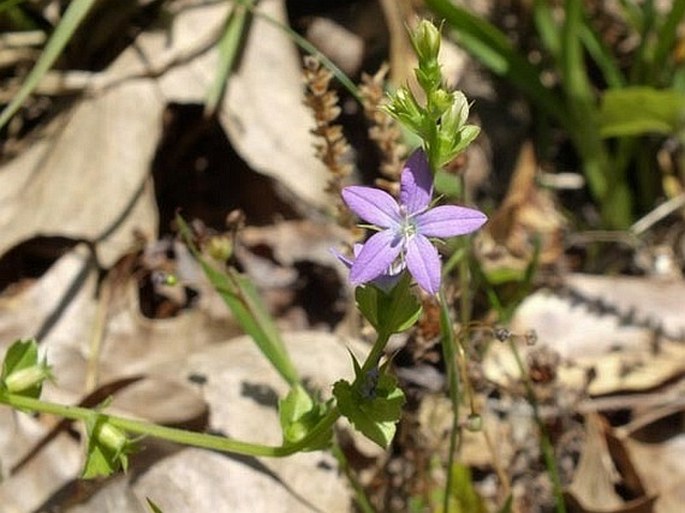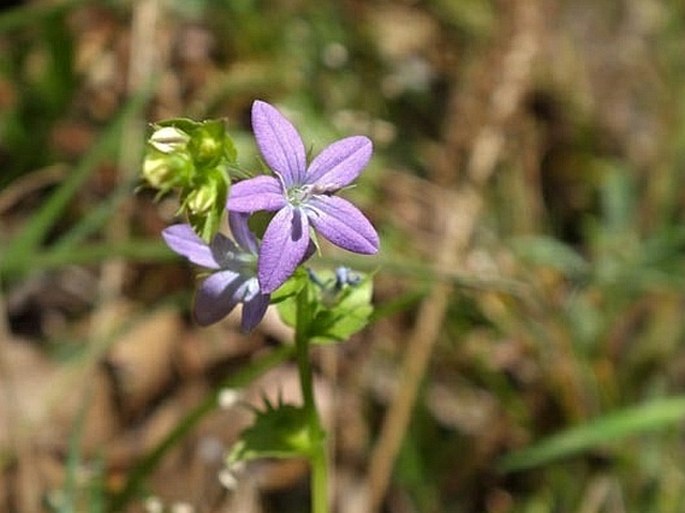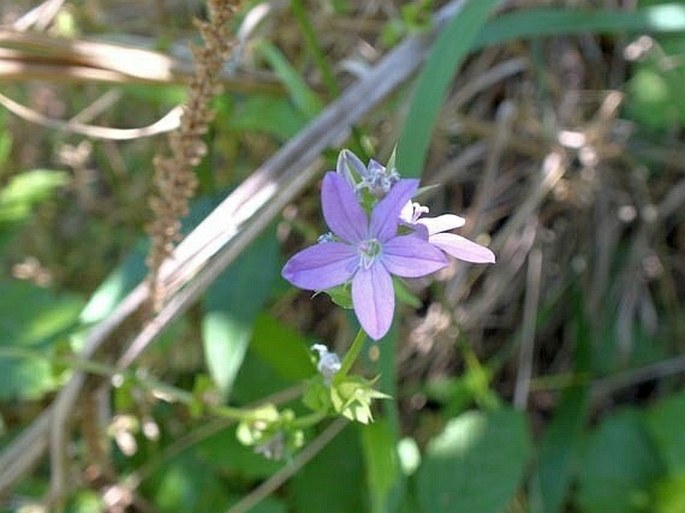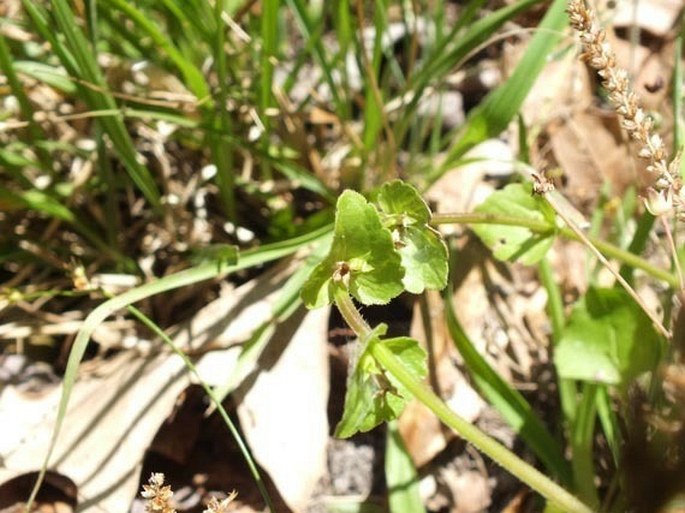Syn.: Campanula amplexicaulis Michx., Campanula angulata Raf., Campanula anticensis Kunze ex A. DC., Campanula flagellaris Kunth, Campanula perfoliata L., Campanula verticillata Hill, Dysmicodon perfoliatum (L.) Nutt., Legousia perfoliata (L.) Britton, Pentagonia perfoliata (L.) Kuntze, Prismatocarpus perfoliatus (L.) Sweet, Specularia perfoliata (L.) A. DC., Triodallus rupestris (Raf.) Raf. ex A. DC. in DC., Triodanis rupestris Raf., Triodanis scabra Raf.
Family: Campanulaceae Juss.

Distribution: North American species found i Canada in provinces of British Columbia, Ontario and Quebec and in the whole of US with exception of Nevada. Also found in Mexican states of Chihuahua, Hidalgo, Puebla, Queretaro and Veracruz.
Ecology: Dry grasslands, rocky slopes, open forests and disturbed areas in the lowland and up to about 1800 m. Blooms from early spring, depending on geographical latitude.
Description: Annual herb, 10–35 cm tall, occasionally taller, from taproot. Stems erect, usually unbranched, light green, grooved, minutely hairy along ridges. Leaves alternate, cordate, scalloped margins, 0.5–3 cm long, prominently veined, clasping stem, milky sap from stems and leaves. Flowers from axils of the upper leaves, 1–3, only one blooms at a time, about 2 cm across, pentamerous, deep violet to purple, short tubular corolla with spreading lobes, darker purple lines converging to the throat, throat pale to white, stamens spreading, pistil prominent. Fruit is a capsule splitting in 3 parts with many tiny seeds, lens-shaped, reddish brown.
Note: This plant produces self-fertile flowers on the lower stem, which never open.



These images were taken in USA, Louisiana, Fontainebleau State Park (May 2014).


